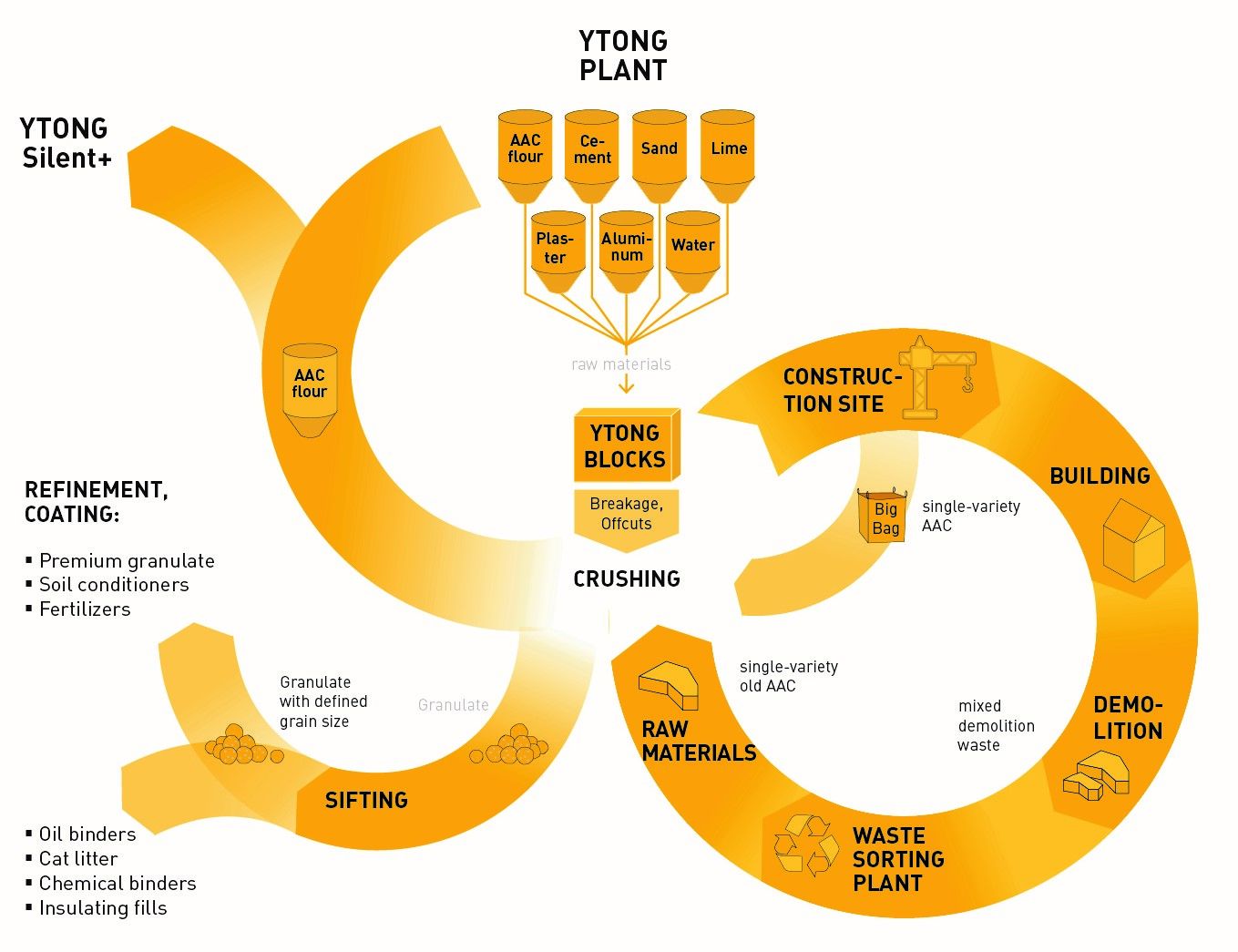The raw material autoclaved aerated concrete
Whether autoclaved aerated concrete (AAC) powder, which is recycled from production, or AAC from demolition projects, which is recycled according to type, is used in the production of new blocks makes no difference in principle.
After all, in both cases it is AAC. However, the resource efficiency is significantly higher when building materials are recycled from existing buildings into new building materials. This so-called “urban mining” will be a very central topic for the building materials industry in the coming decades.
As you have already learned in our previous contributions, AAC powder has been used in the production of new AAC for decades. Today, depending on the product, the proportion of this powder accounts for up to 15 percent. To produce this powder, production residues that accumulate in the factory are reused. The alternative would be to AAC powder that originally comes from demolition and dismantling projects and has been recycled by type. In the end, this makes no difference to the product properties. But: The energy and ecological balance sheet is of course better.
Circular economy at Xella at a glance:

Another product where this alternative is currently being tested is the Ytong Silent+. This is a calcium silicate unit that consists of the three natural components sand, water and lime. A significant portion of the sand is replaced by recycled AAC as a secondary raw material: Since the calcium silicate unit is produced using a somewhat simpler technology than AAC, as much as 20 percent AAC powder can be used here, which is produced from residual or post-demolition material that accumulates during production in the plant. In this way, the use of increasingly scarce and expensive primary raw materials is already greatly reduced, and environmentally conscious construction is supported.
Xella is now going one step further to further strengthen the recyclability. “The opening up of the recipe for powder from old porous concrete is obvious here”, explains Dr. Oliver Kreft, responsible for circular economy at Xella Technologie und Forschungsgesellschaft. “We are currently researching the use of AAC powder from demolition and dismantling projects for the Ytong Silent+, so that this future-oriented product will be even more environmentally friendly. First tests were very promising.”
Learn more about this topic in the video:
You can find more about Xella Technologie- und Forschungsgesellschaft here.
More sustainability news
-
How to integrate responsibility into every step from production to recycling?
At Xella, sustainability is our DNA and influences our practices throughout our entire value chain - from energy production to responsible use of raw materials.
View more -
Kick-off of ReloAD: working together toward circular construction logistics in Brussels
What if every leftover block on a construction site could start a new life instead of ending up as waste? That’s the vision behind ReloAD—an innovative project aimed at making the logistics flows
View more -
When technology meets sustainability: relocating a ball mill
After providing reliable service for nearly two decades at the German plant in Wedel, the ball mill has found a new home at the AAC plant in Mios, France. This logistical feat has become a real showca
View more
Introduction
2025 Xella International. All rights reserved.